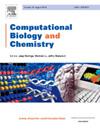MGMA-DTI: Drug target interaction prediction using multi-order gated convolution and multi-attention fusion
IF 2.6
4区 生物学
Q2 BIOLOGY
引用次数: 0
Abstract
Accurately predicting drug-target interactions (DTI) is crucial for drug discovery and can reduce drug development costs. Recent deep learning-based DTI predictions have demonstrated promising performance, but they still face two challenges: (i) The over-reliance on the extraction of local features and insufficient learning of global features limit the model’s performance. (ii) The lack of effective fusion of drug-target interaction features leads to the lack of interpretability of the model. To address these challenges, we propose a new model for predicting drug-target interactions based on multi-order gated convolution and multi-attention fusion, MGMA-DTI. The drug feature encoder obtains a two-dimensional molecular graph based on the drug’s SMILES string and uses a graph convolutional neural network to encode the drug features. The protein encoder is based on a multi-order gated convolution, which enhances the model’s ability to capture global feature between amino acid sequences. In order to better achieve interactive learning between drugs and proteins, we designed a multi-attention fusion module that effectively captures the drug-target interaction features. Experimental results show that MGMA-DTI outperforms other baseline models on three benchmark datasets: BindingDB, BioSNAP, and Human. Case studies further demonstrate that the model provides valuable insights for drug discovery. In addition, our model provides molecular-level interpretability, which can provide more scientifically meaningful guidance.

MGMA-DTI:基于多阶门控卷积和多注意融合的药物靶标相互作用预测
准确预测药物-靶标相互作用(DTI)对药物发现至关重要,可以降低药物开发成本。最近基于深度学习的DTI预测已经显示出很好的性能,但它们仍然面临两个挑战:(i)过度依赖局部特征的提取和对全局特征的学习不足限制了模型的性能。(ii)药物-靶标相互作用特征缺乏有效融合,导致模型缺乏可解释性。为了解决这些挑战,我们提出了一种基于多阶门控卷积和多注意融合的药物-靶标相互作用预测新模型MGMA-DTI。药物特征编码器根据药物的SMILES字符串获得二维分子图,并使用图卷积神经网络对药物特征进行编码。该蛋白质编码器基于多阶门控卷积,增强了模型捕获氨基酸序列之间全局特征的能力。为了更好地实现药物与蛋白质之间的交互学习,我们设计了一个多注意力融合模块,有效地捕捉药物-靶标相互作用的特征。实验结果表明,MGMA-DTI在BindingDB、BioSNAP和Human三个基准数据集上优于其他基线模型。案例研究进一步表明,该模型为药物发现提供了有价值的见解。此外,我们的模型提供了分子水平的可解释性,这可以提供更有科学意义的指导。
本文章由计算机程序翻译,如有差异,请以英文原文为准。
求助全文
约1分钟内获得全文
求助全文
来源期刊

Computational Biology and Chemistry
生物-计算机:跨学科应用
CiteScore
6.10
自引率
3.20%
发文量
142
审稿时长
24 days
期刊介绍:
Computational Biology and Chemistry publishes original research papers and review articles in all areas of computational life sciences. High quality research contributions with a major computational component in the areas of nucleic acid and protein sequence research, molecular evolution, molecular genetics (functional genomics and proteomics), theory and practice of either biology-specific or chemical-biology-specific modeling, and structural biology of nucleic acids and proteins are particularly welcome. Exceptionally high quality research work in bioinformatics, systems biology, ecology, computational pharmacology, metabolism, biomedical engineering, epidemiology, and statistical genetics will also be considered.
Given their inherent uncertainty, protein modeling and molecular docking studies should be thoroughly validated. In the absence of experimental results for validation, the use of molecular dynamics simulations along with detailed free energy calculations, for example, should be used as complementary techniques to support the major conclusions. Submissions of premature modeling exercises without additional biological insights will not be considered.
Review articles will generally be commissioned by the editors and should not be submitted to the journal without explicit invitation. However prospective authors are welcome to send a brief (one to three pages) synopsis, which will be evaluated by the editors.
 求助内容:
求助内容: 应助结果提醒方式:
应助结果提醒方式:


